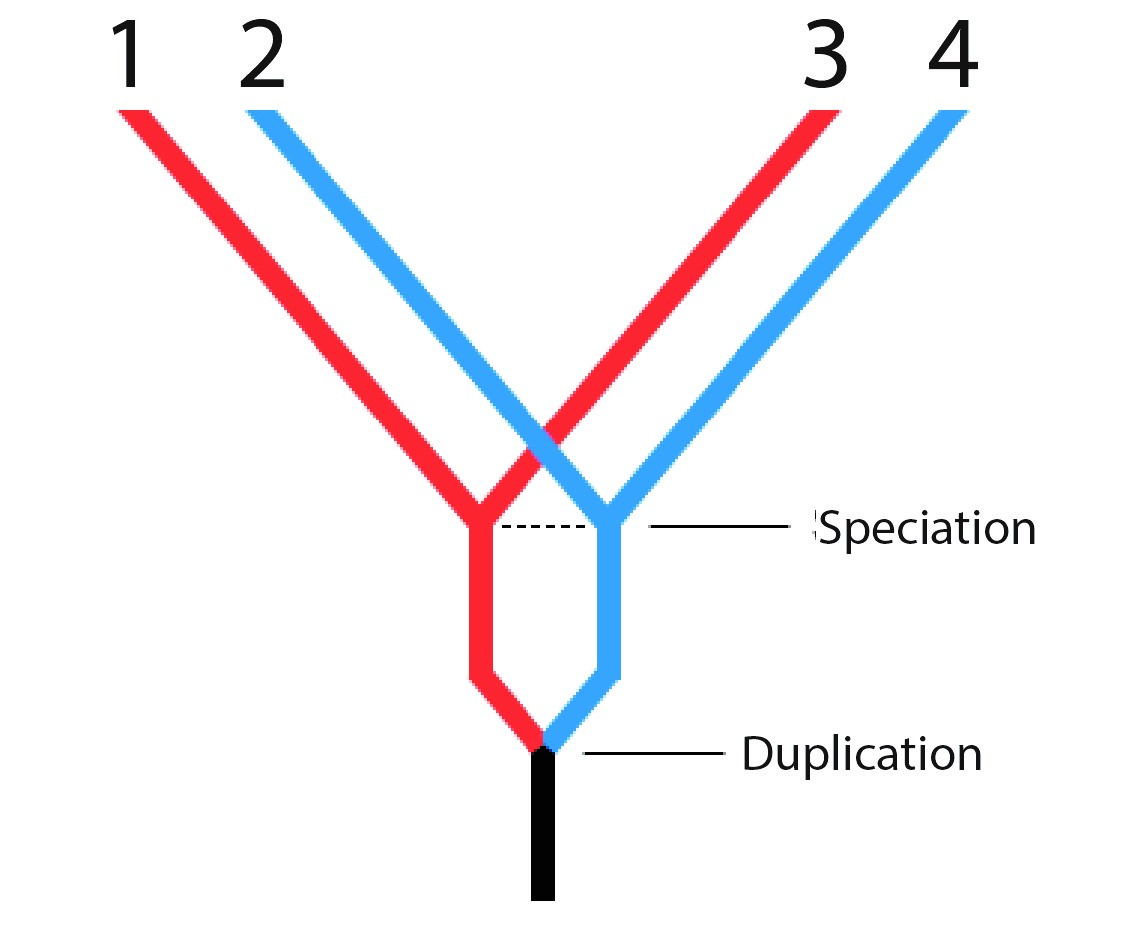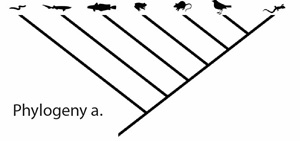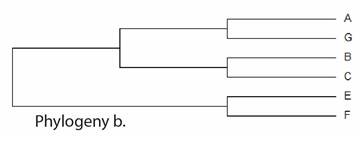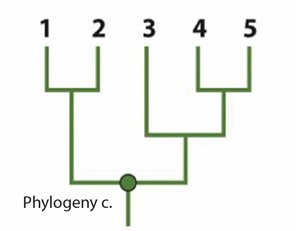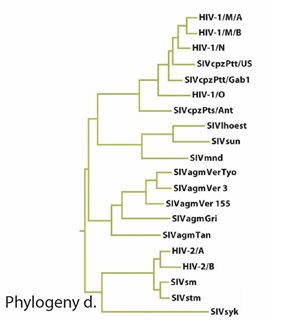Biological Evolution Exam 1
-
What is evolution?
-
Change in a biological population over time
-
Natural selection of species
-
Organismal variance across geographical space
-
Any change that occurs in a living system
-
Biological Evolution Exam 1 assesses understanding of evolution, transformational processes in biology, and variational processes. It examines key examples and arguments relevant to evolutionary theory and its educational implications.

Quiz Preview
- 2.
Select the best example of change caused by a transformational process.
-
A gravel company digs up a mixture of different sized rocks and then puts them through various sized sorters until only pea sized gravel remains.
-
A fruit producer inspects the entire crop of apples and only sells apples that are free of major blemishes.
-
The U.S. Army has a rigorous basic training program that includes technical, physical and mental training. The end result of this training is a dramatic increase in the abilities and aptitude of the recruits.
-
Bull finches on the island of Santa Maria have variation in their beak sizes. After a drought, when only large, thick-shelled seeds were available as a food source, there was a significant increase in the average size of beaks of new hatchlings.
Correct Answer
A. The U.S. Army has a rigorous basic training program that includes technical, physical and mental training. The end result of this training is a dramatic increase in the abilities and aptitude of the recruits.Explanation
The U.S. Army's basic training program is an example of change caused by a transformational process because it involves a comprehensive training program that aims to improve the abilities and aptitude of recruits. Through technical, physical, and mental training, the recruits undergo a transformation and experience a significant increase in their skills and capabilities. This process involves a deliberate effort to bring about a positive change in the recruits' abilities, making it a clear example of a transformational process.Rate this question:
-
- 3.
Which of the following biological processes represents evolution of a population caused by a transformational process?
-
Natural selection of brood size in a population of guppies.
-
Unintended artificial selection of Staphylococcus aureus bacteria for resistance against antibiotics.
-
New mutation in HIV that allow it to circumvent the human immune system.
-
Genetic drift removing random diversity from a small population of beetles.
Correct Answer
A. New mutation in HIV that allow it to circumvent the human immune system.Explanation
The correct answer is "New mutation in HIV that allow it to circumvent the human immune system." This represents evolution caused by a transformational process because it involves the development of a new trait (mutation) in the HIV virus that allows it to overcome the human immune system. This is a transformational process as it leads to the emergence of a new characteristic in the population of HIV viruses.Rate this question:
-
- 4.
Variational processes ______________ the diversity of a population.
-
Increase
-
Have a completely unpredictable effect on
-
Do not affect
-
Decrease
Correct Answer
A. DecreaseExplanation
Variational processes refer to any factors or mechanisms that introduce variation within a population. These processes can include genetic mutations, environmental changes, or random events. When variational processes decrease, it means that there is a reduction in the amount of variation within the population. This can lead to a decrease in diversity, as there are fewer different traits or characteristics present.Rate this question:
-
- 5.
Which of the following is not a major argument in the legal battles regarding the teaching of creationism and intelligent design in US public schools?
-
Separation of Church and State
-
Not enough instruction time
-
The non-scientific nature of the subject
Correct Answer
A. Not enough instruction timeExplanation
The argument of "not enough instruction time" is not a major argument in the legal battles regarding the teaching of creationism and intelligent design in US public schools. The main arguments revolve around the separation of Church and State, as teaching these subjects can be seen as promoting a specific religious belief, and the non-scientific nature of creationism and intelligent design, as they lack empirical evidence and scientific support. However, the argument about limited instruction time is not typically a central concern in these legal battles.Rate this question:
-
- 6.
Whales share a common ancestor with which of the following organisms? (mark all that apply)
-
Hippopotamuses
-
Horses
-
Lungfish
-
Mushrooms
-
Bacteria
Correct Answer(s)
A. Hippopotamuses
A. Horses
A. Lungfish
A. Mushrooms
A. BacteriaExplanation
Whales share a common ancestor with hippopotamuses, horses, lungfish, mushrooms, and bacteria. This means that at some point in the past, all of these organisms diverged from a common ancestor and evolved into their respective species. This is supported by evidence from comparative anatomy, genetics, and the fossil record, which show similarities and shared traits between whales and these organisms.Rate this question:
-
- 7.
A theory is ____________________.
-
Basically an informed guess about how the physical world around us works
-
A cohesive and rigorously tested related set of hypotheses that describes a large section of scientific endeavor
-
A mathematical construct that allows us to make predictions prior to performing experiments
-
The historical sequence of events leading to a major breakthrough in scientific understanding
Correct Answer
A. A cohesive and rigorously tested related set of hypotheses that describes a large section of scientific endeavorExplanation
A theory is a cohesive and rigorously tested related set of hypotheses that describes a large section of scientific endeavor. This means that a theory is not just a guess or an assumption, but rather a well-supported and extensively tested explanation for a particular phenomenon or set of phenomena. It is based on empirical evidence and observations, and it provides a framework for understanding and predicting the behavior of the physical world. Theories are constantly being refined and updated as new evidence emerges, and they play a crucial role in advancing scientific knowledge and understanding.Rate this question:
-
- 8.
The earth was created by a supernatural being during six creative periods, however the time for each of those six creative periods varied and may have spanned many millions of years. The preceding description best fits which type of creationism?
-
Young Earth Creationism
-
Intelligent Design
-
Gap Creationism
-
Day Age Creationism
Correct Answer
A. Day Age CreationismExplanation
Day Age Creationism is the best fit for the given description. Day Age Creationism posits that the six creative periods described in the Bible were not literal 24-hour days, but rather represent long periods of time, possibly millions of years. This explanation aligns with the statement that the time for each of the creative periods may have spanned many millions of years.Rate this question:
-
- 9.
All ethical decisions should be made using well designed scientific experiments that are able to distinguish between universal values and refute ideas that may be damaging to society.
-
True
-
False
Correct Answer
A. FalseExplanation
This statement is not accurate. Ethical decisions cannot always be made solely through scientific experiments. Ethical considerations involve a variety of factors, including cultural values, personal beliefs, and social norms, which cannot always be measured or determined through scientific experiments alone. Additionally, not all ethical questions can be answered through scientific methods, as some may involve subjective judgments or individual perspectives. Therefore, it is incorrect to suggest that all ethical decisions should be based solely on well-designed scientific experiments.Rate this question:
-
- 10.
Which types of rocks are the easiest to directly date using the radioactive half-lives of the isotopes they contain?
-
Igneous
-
Sedimentary
-
Metamorphic
Correct Answer
A. IgneousExplanation
Igneous rocks are the easiest to directly date using the radioactive half-lives of the isotopes they contain because they form from the solidification of molten material, allowing for the isotopes to be effectively trapped within the rock. Sedimentary rocks are formed from the accumulation of sediments and may contain older material, making direct dating more difficult. Metamorphic rocks are formed from the transformation of existing rocks under high pressure and temperature, which can reset the radioactive clock, making direct dating less reliable.Rate this question:
-
- 11.
When newly formed a rock has 200 ug per kg of a radioactive element after 100 million years the same rock only has 6.25 ug per kg of that same radioactive element. What is the half-life of this element?
-
10 million years
-
20 million years
-
50 million years
-
100 million years
Correct Answer
A. 20 million yearsExplanation
The half-life of a radioactive element is the time it takes for half of the initial amount of the element to decay. In this case, the rock started with 200 ug per kg of the element and after 100 million years, it only has 6.25 ug per kg. This means that half of the initial amount (100 ug per kg) decayed in 100 million years. Therefore, the half-life of this element is 100 million years divided by 2, which is 50 million years.Rate this question:
-
- 12.
Which types of rocks are the least important when trying to determine the relative date of fossils?
-
Igneous
-
Sedimentary
-
Metamorphic
Correct Answer
A. MetamorphicExplanation
Metamorphic rocks are the least important when trying to determine the relative date of fossils because they are formed through the process of intense heat and pressure, which can alter the original structure and composition of the rocks and any fossils within them. As a result, it becomes difficult to accurately determine the age of fossils preserved in metamorphic rocks. Sedimentary rocks, on the other hand, are formed through the accumulation and cementation of sediments over time, making them more reliable for dating fossils. Igneous rocks are formed from the solidification of molten magma and can also provide important clues about the age of fossils.Rate this question:
-
- 13.
Which of the following best describes the accuracy and precision of most fossil dates?
-
Fossil dates are both accurate and very precise
-
Fossil date are neither accurate or precise
-
Fossil dates are quite accurate, but often not very precise
-
Fossil dates are quite precise, but often not very accurate
Correct Answer
A. Fossil dates are quite accurate, but often not very preciseExplanation
Fossil dates are quite accurate, but often not very precise. This means that the estimated age of fossils is generally close to the actual age, but the measurements may not be consistent or have a narrow range. This could be due to various factors such as limitations in dating techniques, uncertainties in the fossil record, or the presence of multiple events or processes that can affect the age determination.Rate this question:
-
- 14.
Using the diagram below and the provided information, how old is the rock layer labelled with the star?
-
Between 220 million years old and 280 million years old
-
Less than 220 million years old
-
More than 280 million years old
-
500 million years old
-
280 million years old, plus or minus 5 million years
Correct Answer
A. More than 280 million years oldExplanation
The diagram and provided information indicate that the rock layer labelled with the star is older than 280 million years.Rate this question:
-
- 15.
For the following events select both a date and a line of evidence that supports that date.Origin of Earth
-
14 billion years ago
-
800-600 million years ago
-
2 billion years ago
-
4.5 billion years ago
-
3.3 billion years ago
-
Dramatic increase in the oxides found in sedimentary rocks
-
Direct radioactive dating of oldest igneous rocks
-
Relative dating of fossils in sedimentary rocks
-
Relative dating of fossils in sedimentary rocks
-
Rate at which the stars are moving away from us
-
Carbon dating of non-fossilized organic matter
Correct Answer(s)
A. 4.5 billion years ago
A. Direct radioactive dating of oldest igneous rocksExplanation
The correct answer is 4.5 billion years ago, based on direct radioactive dating of the oldest igneous rocks. This method involves measuring the decay of radioactive isotopes in rocks to determine their age. By analyzing the isotopes present in the oldest igneous rocks on Earth, scientists have determined that the Earth formed approximately 4.5 billion years ago. This method provides a direct and reliable way to determine the age of the Earth.Rate this question:
-
- 16.
For the following events select both a date and a line of evidence that supports that date.Origin of Photosynthesis
-
14 billion years ago
-
800-600 million years ago
-
2 billion years ago
-
4.5 billion years ago
-
3.3 billion years ago
-
Dramatic increase in the oxides found in sedimentary rocks
-
Direct radioactive dating of oldest igneous rocks
-
Relative dating of fossils in sedimentary rocks
-
Rate at which the stars are moving away from us
-
Carbon dating of non-fossilized organic matter
Correct Answer(s)
A. 3.3 billion years ago
A. Dramatic increase in the oxides found in sedimentary rocksExplanation
The correct answer is 3.3 billion years ago because the evidence provided, which is the dramatic increase in the oxides found in sedimentary rocks, supports this date. This evidence suggests that photosynthesis was occurring at this time, as the process of photosynthesis releases oxygen as a byproduct, which would lead to an increase in oxides in sedimentary rocks.Rate this question:
-
- 17.
For the following events select both a date and a line of evidence that supports that date.Origin of Complex Animals
-
14 billion years ago
-
800-600 million years ago
-
2 billion years ago
-
4.5 billion years ago
-
3.3 billion years ago
-
Dramatic increase in the oxides found in sedimentary rocks
-
Direct radioactive dating of oldest igneous rocks
-
Relative dating of fossils in sedimentary rocks
-
Rate at which the stars are moving away from us
-
Carbon dating of non-fossilized organic matter
Correct Answer(s)
A. 800-600 million years ago
A. Relative dating of fossils in sedimentary rocksExplanation
The answer "800-600 million years ago, Relative dating of fossils in sedimentary rocks" suggests that the origin of complex animals occurred during this time period based on the evidence of relative dating of fossils in sedimentary rocks. Relative dating is a method used to determine the age of fossils by comparing their positions in the rock layers. By examining the fossils found in sedimentary rocks, scientists can estimate the age of the rocks and infer the time period when complex animals originated.Rate this question:
-
- 18.
What evidence supports the endosymbiosis hypothesis? (mark all that apply)
-
Mitochondria and chloroplasts have their own genome.
-
Mitochondria and chloroplasts can be found in much greater numbers in the cell than other organelles.
-
Mitochondria and chloroplasts have a double membrane.
-
Genes in both the mitochondrion and chloroplast are more closely related to bacterial genes than to any eukaryotic genes.
-
Some of the earliest organisms with mitochondria have been preserved in fine grained sedimentary rocks and these organelles are visible under a microscope.
Correct Answer(s)
A. Mitochondria and chloroplasts have their own genome.
A. Mitochondria and chloroplasts have a double membrane.
A. Genes in both the mitochondrion and chloroplast are more closely related to bacterial genes than to any eukaryotic genes.Explanation
The endosymbiosis hypothesis is supported by several lines of evidence. One piece of evidence is that mitochondria and chloroplasts have their own genome, which is separate from the nuclear genome of the cell. This suggests that they were once independent organisms that were engulfed by a host cell. Another piece of evidence is that mitochondria and chloroplasts have a double membrane, which is consistent with the idea that they were engulfed by a host cell. Additionally, the genes in both mitochondria and chloroplasts are more closely related to bacterial genes than to any eukaryotic genes, indicating a shared evolutionary history with bacteria.Rate this question:
-
- 19.
Which of the following groups of organisms would be the best to select as a model for the origin of multicellularity?
-
Slime Molds
-
Diapsids
-
Bacteria
-
Mushrooms
-
Tardigrades
Correct Answer
A. Slime MoldsExplanation
Slime molds would be the best group of organisms to select as a model for the origin of multicellularity because they exhibit a range of different forms of multicellularity, including both unicellular and multicellular stages in their life cycle. This allows scientists to study the transition from unicellularity to multicellularity and understand the evolutionary processes involved. Additionally, slime molds have a relatively simple structure and genome, making them more accessible for research and experimentation.Rate this question:
-
- 20.
Nodes on a phylogeny represent common ancestral populations for the species at the tips of the branches.
-
True
-
False
Correct Answer
A. TrueExplanation
Nodes on a phylogeny represent common ancestral populations for the species at the tips of the branches. This means that each node represents a point in evolutionary history where a common ancestor gave rise to multiple descendant species. The branches leading from the nodes represent the evolutionary relationships and diversification of these descendant species over time. Therefore, it is true that nodes on a phylogeny represent common ancestral populations for the species at the tips of the branches.Rate this question:
-
- 21.
Select the name of the first period and the beginning date for each of the eras listed below.Cenozoic
-
Cambrian
-
Permian
-
Triassic
-
Tertiary
-
250 mya
-
2500 mya
-
400 mya
-
540 mya
-
65 mya
Correct Answer(s)
A. Tertiary
A. 65 myaExplanation
The correct answer is Tertiary, 65 mya. The Tertiary period is the first period of the Cenozoic era, which began approximately 65 million years ago (mya). This period followed the extinction event that wiped out the dinosaurs and marked the rise of mammals. It lasted until around 2.6 million years ago. Therefore, Tertiary is the correct answer for the first period in the Cenozoic era, and 65 mya is the correct beginning date for this period.Rate this question:
-
- 22.
Select the name of the first period and the beginning date for each of the eras listed below.Paleozoic
-
Cambrian
-
Permian
-
Triassic
-
Tertiary
-
250 mya
-
2500 mya
-
400 mya
-
540 mya
-
65 mya
Correct Answer(s)
A. Cambrian
A. 540 myaExplanation
The correct answer is Cambrian, 540 mya. The Paleozoic era is divided into several periods, with the Cambrian being the first period. The Cambrian period began approximately 540 million years ago (mya). Therefore, the name of the first period and its beginning date for the Paleozoic era is Cambrian, 540 mya.Rate this question:
-
- 23.
Select the name of the first period and the beginning date for each of the eras listed below.Mesozoic
-
Cambrian
-
Permian
-
Triassic
-
Tertiary
-
250 mya
-
2500 mya
-
400 mya
-
540 mya
-
65 mya
Correct Answer(s)
A. Triassic
A. 250 myaExplanation
The correct answer is Triassic, 250 mya. The Triassic period is the first period of the Mesozoic era, which occurred approximately 250 million years ago (mya). This period followed the Permian period and preceded the Jurassic period. It is known for the diversification of reptiles and the emergence of the first dinosaurs.Rate this question:
-
- 24.
Character 1Character 2Character 3Character 4Character 5Character 6Character 7Species A0000000Species B0000110Species C1000111Species D1001111Species E0111111Species F0110101Which of the above characters is a synapomorphy for the group made up of Species C, D, E and F?
-
Character 1
-
Character 3
-
Character 4
-
Character 6
-
Character 7
Correct Answer
A. Character 7Explanation
Character 7 is a synapomorphy for the group made up of Species C, D, E, and F because it is the only character that is present in all four species and absent in the other two species (A and B). This character is a shared derived trait that evolved in the common ancestor of Species C, D, E, and F and is inherited by all descendants of that ancestor.Rate this question:
-
- 25.
Character 1Character 2Character 3Character 4Character 5Character 6Character 7Species A0000000Species B0000110Species C1000111Species D1001111Species E0111111Species F0110101Which of the above characters is a symplesiomorphy for the group made up of Species B, C, D, E and F?
-
Character 1
-
Character 3
-
Character 4
-
Character 6
-
Character 7
Correct Answer
A. Character 6Explanation
Character 6 is a symplesiomorphy for the group made up of Species B, C, D, E, and F because it is shared by all of these species and also present in the outgroup (Species A). A symplesiomorphy is a shared ancestral character, meaning it was present in the common ancestor of the group. In this case, Character 6 is present in both the ingroup and outgroup, indicating that it is an ancestral trait that has been retained in the group.Rate this question:
-
- 26.
Character 1Character 2Character 3Character 4Character 5Character 6Character 7Species A0000000Species B0000110Species C1000111Species D1001111Species E0111111Species F0110101On the best phylogeny above, which characters exhibit homoplasy? (mark two answers)
-
Character 1
-
Character 3
-
Character 4
-
Character 6
-
Character 7
Correct Answer(s)
A. Character 4
A. Character 6Explanation
Homoplasy refers to the occurrence of similar traits in different species that are not inherited from a common ancestor. In the given phylogeny, Character 4 and Character 6 exhibit homoplasy because they have the same trait (0) in Species A and Species B, which are not closely related. This suggests that the similarity in these characters is not due to common ancestry but rather due to convergent evolution or other factors.Rate this question:
-
- 27.
Which of the following relationships would you expect to exhibit high levels of tokogeny? (mark two best answers)
-
Relationships between species of mushrooms
-
Relationships between species of amphibians
-
Relationships between species of bacteria
-
Relationships within a species of mammal
Correct Answer(s)
A. Relationships between species of bacteria
A. Relationships within a species of mammalExplanation
Tokogeny refers to the process of reproduction within a species. In the given options, relationships between species of bacteria would exhibit high levels of tokogeny as bacteria reproduce asexually through binary fission, resulting in rapid population growth within a species. Additionally, relationships within a species of mammal would also exhibit high levels of tokogeny as mammals reproduce sexually and have internal fertilization, leading to the production of offspring within the same species.Rate this question:
-
- 28.
Use the phylogeny to answer the following questionsWhat is the sister taxon of the Hyraxes?
-
The group that includes Elephants and Manatees
-
The group that includes Tapirs, Rhinoceroses and Horses
-
The Manatees
-
The Tapirs
Correct Answer
A. The group that includes Elephants and ManateesExplanation
The sister taxon of the Hyraxes is the group that includes Elephants and Manatees because they share a more recent common ancestor with Hyraxes than the other options.Rate this question:
-
- 29.
Use the phylogeny to answer the following question.Which of the following would be a valid classification?
-
Trichonomia, a group that includes Pigs and Ruminants
-
Ceratoponth, a group that includes Ruminants and Rhinoceroses
-
Relidactyla, a group that includes Ruminants, Hippopotamuses and Cetaceans
-
Prevax, a group that includes Pigs, Ruminants and Hippopotamuses
Correct Answer
A. Relidactyla, a group that includes Ruminants, Hippopotamuses and CetaceansExplanation
The correct answer is Relidactyla, a group that includes Ruminants, Hippopotamuses, and Cetaceans. This classification is valid because it includes organisms that share a common ancestor and have similar characteristics. Ruminants, Hippopotamuses, and Cetaceans are all part of the same branch on the phylogenetic tree, indicating their close evolutionary relationship.Rate this question:
-
- 30.
Why are some relationships depicted as polytomies?
-
Because some of the included species are extinct
-
Because the included species were analyzed using only DNA data
-
Because there is not enough data to fully resolve the relationships of the included species
-
Because there are too many taxa included in the analysis to depict a fully resolved topology
Correct Answer
A. Because there is not enough data to fully resolve the relationships of the included speciesExplanation
Some relationships are depicted as polytomies because there is not enough data available to fully determine the relationships between the included species. This means that the relationships cannot be accurately represented in a fully resolved topology, and instead, multiple branches may emerge from a single node, indicating uncertainty in the relationships.Rate this question:
-
- 31.
Using the diagram, which of the following sets of genes are orthologous?
-
2 and 3
-
1 and 2
-
2 and 4
-
1 and 4
Correct Answer
A. 2 and 4Explanation
Genes are considered orthologous when they are derived from a common ancestor through speciation events. In the given diagram, gene 2 and gene 4 are orthologous because they are found in different species (represented by the different boxes) but share a common ancestor (represented by the same color of the gene). Therefore, the correct answer is 2 and 4.Rate this question:
-
- 32.
Extinct species cannot be included on phylogenies.
-
True
-
False
Correct Answer
A. FalseExplanation
This statement is false because extinct species can be included on phylogenies. Phylogenies are diagrams that show the evolutionary relationships between different species, including both extant (living) and extinct species. By analyzing fossil records and genetic data, scientists can determine the evolutionary history and placement of extinct species on phylogenetic trees. Including extinct species on phylogenies helps us understand the diversity and evolution of life on Earth.Rate this question:
-
- 33.
A trait that has lost its original function, but is still present in an organism as a unused remnant is known as ______________.
-
Homoplasious
-
Anachronisitc
-
Reliquant
-
Vestigial
Correct Answer
A. VestigialExplanation
A trait that has lost its original function, but is still present in an organism as an unused remnant is known as vestigial.Rate this question:
-
- 34.
Which of the following phylogenies is a phylogram?
Correct Answer
A.Explanation
A phylogram is a type of phylogenetic tree that includes branch lengths proportional to the amount of evolutionary change. This allows for the visualization of the amount of genetic divergence between species. Without the actual options provided in the question, it is not possible to determine which phylogeny is a phylogram.Rate this question:
- 35.
What are the closest relatives of the plants?
-
Cyanobacteria
-
Mushroom
-
Animals
-
Green Algae
Correct Answer
A. Green AlgaeExplanation
Green algae are considered the closest relatives of plants because they share many similarities in terms of cellular structure, photosynthetic pigments, and reproductive processes. Both green algae and plants contain chlorophyll a and b, which allows them to carry out photosynthesis. They also have similar cell walls composed of cellulose. Additionally, green algae and plants reproduce through the alternation of generations, where they have both a multicellular diploid and haploid stage in their life cycle. These shared characteristics suggest a close evolutionary relationship between green algae and plants.Rate this question:
-
- 36.
What is the relative order of origin of the following groups, beginning with the most ancient?
-
Land plants, jawed fish, lobe-finned fish, amniotes
-
Jawed fish, lobe-finned fish, amniotes, land plants
-
Land plants, jawed fish, amniotes, lobe-finned fish
-
Land plants, amniotes, jawed fish, lobe-finned fish
Correct Answer
A. Land plants, jawed fish, lobe-finned fish, amniotes -
- 37.
All the species we call "fish" today represent a polyphyletic grouping and not a valid, single taxon.
-
True
-
False
Correct Answer
A. TrueExplanation
The statement is true because the term "fish" is used to refer to a wide variety of species that do not share a common ancestor. In taxonomy, a valid taxon should include all descendants of a common ancestor, but this is not the case with fish. Some fish species are more closely related to tetrapods (such as amphibians, reptiles, birds, and mammals) than they are to other fish species. Therefore, the term "fish" is not a valid, single taxon but rather a polyphyletic grouping.Rate this question:
-
- 38.
Which of the following evolutionary events in the therapod dinosaurs was critical for the origin of flight?
-
Transition to a bipedal gait
-
Increase in the average size of species
-
Reduction in the number of bones in the inner ear
-
Switch to a carnivorous diet
Correct Answer
A. Transition to a bipedal gaitExplanation
The transition to a bipedal gait in therapod dinosaurs was critical for the origin of flight. This shift from a quadrupedal to a bipedal posture allowed for the development of adaptations necessary for flight, such as the elongation of the forelimbs into wings. Bipedalism freed up the forelimbs, enabling them to evolve into wings and facilitating the development of flight in later dinosaur descendants.Rate this question:
-
- 39.
Which of the following is the function of bird feathers that most likely evolved first?
-
Display
-
Insulation
-
Flight
-
Respiration
Correct Answer
A. DisplayExplanation
Bird feathers most likely evolved first for the function of display. Feathers play a crucial role in attracting mates and establishing dominance within a species. They can be used for courtship displays, territorial displays, or to intimidate rivals. While feathers also provide insulation, flight, and aid in respiration, the primary function of feathers evolving first is for display purposes.Rate this question:
-
- 40.
What are two trends we see in the evolution of the horse lineage? (mark two best answers)
-
Reduction of the number of digits on appendages
-
Increase in the sensitivity of the ear
-
Decrease in the relative size of teeth
-
Overall increase in size
-
Ability to form complex social units
Correct Answer(s)
A. Reduction of the number of digits on appendages
A. Overall increase in sizeExplanation
In the evolution of the horse lineage, two trends can be observed. Firstly, there is a reduction in the number of digits on appendages. This can be seen as horses today have a single toe, while their ancestors had multiple toes. Secondly, there is an overall increase in size. Over time, horses have become larger in size compared to their earlier ancestors. These trends reflect the evolutionary changes that have occurred in the horse lineage over time.Rate this question:
-
- 41.
Which of the following are the closest extant relatives of the horses?
-
Rhinoceroses
-
Cows
-
Hippopotamuses
-
Antelopes
-
Deer
Correct Answer
A. RhinocerosesExplanation
Horses and rhinoceroses are both members of the order Perissodactyla, which includes odd-toed ungulates. They share similar characteristics such as having an odd number of toes and a similar dental structure. This indicates a close evolutionary relationship between horses and rhinoceroses. On the other hand, cows, hippopotamuses, antelopes, and deer belong to different orders and are not as closely related to horses as rhinoceroses are.Rate this question:
-
- 42.
Which of the following extinct taxa is most closely related to modern whales?
-
Pakicetus
-
Archaeopteryx
-
Pliohippus
-
Sinornis
Correct Answer
A. PakicetusExplanation
Pakicetus is the correct answer because it is an extinct genus of early whales that lived approximately 50 million years ago. Fossil evidence suggests that Pakicetus had features that are similar to both whales and land-dwelling mammals, making it a transitional form in the evolution of whales. This suggests that Pakicetus is the most closely related extinct taxon to modern whales. Archaeopteryx is an extinct bird species, Pliohippus is an extinct horse species, and Sinornis is an extinct bird species, none of which are closely related to modern whales.Rate this question:
-
- 43.
Humans, Chimps, Bonobos, Gorillas and Orangutans represent all the extant members of ____________.
-
Subtribe Hominina (the hominins)
-
Family Hominidae (the homonids)
-
Order Primates
-
The anapsids
Correct Answer
A. Family Hominidae (the homonids)Explanation
Humans, Chimps, Bonobos, Gorillas, and Orangutans belong to the Family Hominidae (the hominids). This family includes all the extant members of the great apes, which are the closest living relatives to humans. They share common ancestry and have similar physical and genetic characteristics. The other options, Subtribe Hominina, Order Primates, and The anapsids, do not encompass all the mentioned species and are not accurate in representing the extant members of these primates.Rate this question:
-
- 44.
What is the date of origin for the homonin group (Homonina)?
-
65 million years ago
-
14 million years ago
-
5.5 million years ago
-
245 million years ago
Correct Answer
A. 5.5 million years agoExplanation
The correct answer is 5.5 million years ago. This is the estimated date of origin for the hominin group, which includes modern humans and their closest relatives. This date is based on fossil evidence and genetic studies, which suggest that the hominin lineage diverged from other primates around this time.Rate this question:
-
Quiz Review Timeline (Updated): Feb 10, 2023 +
Our quizzes are rigorously reviewed, monitored and continuously updated by our expert board to maintain accuracy, relevance, and timeliness.
-
Current Version
-
Feb 10, 2023Quiz Edited by
ProProfs Editorial Team -
Dec 08, 2014Quiz Created by
Vlgarza2008
 Back to top
Back to top



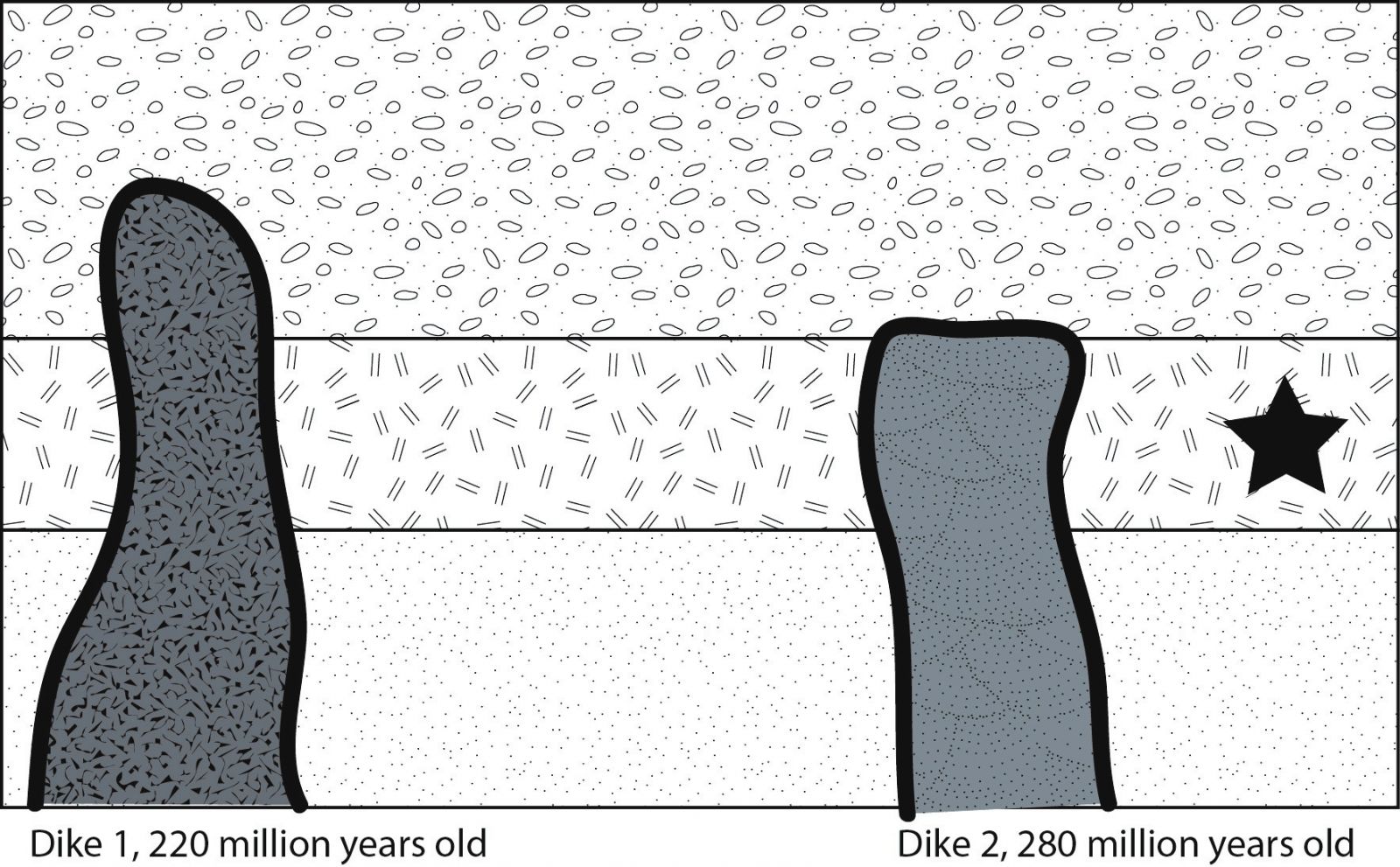
.jpg)
.jpg)
.jpg)

.png)
